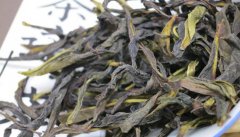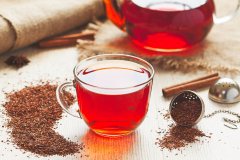The difference of Oxidation fermentation degree between Green Tea and Black Tea comparison of semi-fermented Tea and fully fermented Tea
After the green tea is brewed, and before the black tea turns black, the tea maker rolls up the tea to give it a lovely shape. It used to be handmade, but now it is mainly done by machines, rolling to turn flat leaves into fascinating twists, coils, balls or spears. Generally speaking, the tea rolled slightly tastes more mellow and softer, while the tea rolled under greater pressure breaks down into smaller fragments, forming a more lively and intense brewing. In the past few centuries, Chinese tea makers have invented numerous ballet-like hand movements and created dozens of leaf shapes. In the 1880s, the British invented the tea mill, which saves labor, but the tea brewed is not so unique or refined. Oxidation in green tea, rolling can make the tea show a lovely shape, in oolong tea and black tea, rolling will also cause a reaction, making the tea black. Oolong and black tea are not fixed green teas, but are darkened by a process called "oxidation". In the world of tea, this process has been mistakenly called "fermentation" for centuries because yeast or bacteria are thought to be involved in the process. In fact, this reaction only involves polyphenols and oxygen. In healthy tea, polyphenols exist in "vacuoles", which are chambers in plant cells that can protect tea leaves from insects and other hazards at any time. If insects gnaw on phagocytes, or if strong winds scratch the leaves when they rub against each other, or if the tea maker impregnates the leaves during rolling, the vacuole will burst, releasing polyphenols into the cytoplasm of the cell. In the cytoplasm, polyphenols encounter polyphenol oxidase (PPO). In green tea, the enzyme has no effect because it loses its activity when the tea is heated to 160 degrees Fahrenheit. However, in oolong and black tea, polyphenols react with polyphenols and oxygen to form brown compounds. In nature, these polyphenols are thought to prevent further attacks by giving insects stomachaches. Fortunately for tea drinkers, tea polyphenols are not only delicious, but also pleasing to the eye. There are two main polyphenols in tea, each with its own taste and color. The first to appear is the golden, lively theaflavins. After that, lycopene gradually matured, showing a lovely copper color. The slower the oxidation, the more lycopene, the milder the tea. For more information about theaflavins and thearubins, please click on this blog post.

Oolong tea oxidizes more slowly than other teas. Therefore, they have the most complex and mellow taste. Some oolong teas begin to oxidize when they wither, as tea makers gently tap the leaves on tarpaulins in the sun. This shaking is a very light roll that triggers oxidation along the edges of the leaves. Indeed, it is this gentle stirring that gives oolong tea its unique red color. At the beginning of oxidation, the edges of the leaves become darker red than the rest of the leaves. After withering, the leaves gradually roll up and last for six hours or more during a complex intermittent oxidation process. This gradual oxidation prolongs the wilt, allowing more aromatic compounds to be produced. The final taste and aroma depend entirely on the time of withering and oxidation of oolong tea. About 25% oxidizable oolong tea contains high concentrations of linalool, methyl jasmonate and indole, so it has citrus and lemon, jasmine and gardenia aromas. Plants with oxidation rates between 40% and 75% produce more apricot and peach flavors, which is typical of carotenoid degradation, which is the late stage of the conversion of pigment carotene into apricot compounds ionone, Damascus ketone and Damascus ketone. Chinese black tea has a lot of apricot flavor. Although they oxidize faster than oolong tea because they roll harder, they oxidize slowly enough to produce sweet, mellow, lycopene-rich tea. Oxidation is delayed not by interruption, but by limiting leaves' exposure to oxygen. Traditionally, tea makers start by rolling the leaves very gently to make them as complete as possible, so that most polyphenols remain in the vacuole. Then they piled the rolled leaves into deep, carefully woven bamboo baskets. They left the leaves there for hours, covered with cloth, so that only a trickle of oxygen could reach the leaves. The result is a soft, delicate tea with a plump, round body. Traditional English tea-what we call the tea developed by the British in South Asia-has a kind of vitality caused by rapid oxidation. Perhaps because the British have long preferred crisp tea, tea makers in former British colonies rolled the leaves into finer particles. They then spread the particles in a thin layer, usually blown out with heated air to maximize exposure to oxygen. The oxidation time of tea is longer and slower, so their aroma is more complex. By contrast, traditional English CTC teas are the most astringent of all teas because they oxidize almost immediately. CTC stands for "crushing, tearing and curling", which are the three stages of the "rolling" or crushing process: the leaves are not rolled, but crushed, shredded by fine sieve, torn into tiny pieces, and then curled into fine particles. The particles pass through the conveyor belt under a powerful blower; they change from bright green to flat dark brown like a chameleon at a distance of 100 feet and within hours. These teas contain almost no lycopene; their tannins make them very lively and mouth-watering. These teas taste good with milk because the proteins in the milk combine with tannin compounds to soften them. Oxidation turns the buds golden, while mature tea leaves turn black. The source of darker color is chlorophyll, which is degraded into dark brown chlorophyll and phosphorus-sparse compounds during oxidation. Buds contain very little chlorophyll, which dissolves during withering. Therefore, the oxidized buds only show gold and copper colors that degrade polyphenols. Until recently, the oxidation process was considered to be a fermentation process. Until the mid-20th century, tea manufacturers believed that yeast and bacteria converted sugar into alcohol, just as wine and bread fermented, thus blackening tea. In fact, only Pu'er tea is fermented, and the process of making Pu'er tea is a strictly secret, and it is difficult to know exactly how it happened. But we can speculate. With the increase of tea age, the sugar in tea will be transformed into monoterpenes, which will become sesquiterpenes after years of oxidation and degradation. Sesquiterpenes have the unique taste of soil and camphor in Pu'er tea.
Important Notice :
前街咖啡 FrontStreet Coffee has moved to new addredd:
FrontStreet Coffee Address: 315,Donghua East Road,GuangZhou
Tel:020 38364473
- Prev

What does it mean to kill in the production process of duck shit incense single fir? How to kill tea leaves to share the principle?
When the green tea manufacturer retains the tea to keep it green, all aroma activities that take place during the withering stage of the tea will cease. In the world of fruits and vegetables, this reaction, known as enzymatic browning, affects many foods, including bananas, avocados, potatoes and apples. If you cut the potato, in a few minutes, outside
- Next

The taste of Assam black tea is characterized by the explanation of the production process of malt-flavored Assam black tea.
The final step in the production of dried tea is firing, which preserves the tea by almost completely removing the remaining moisture from the tea. Drying is a more accurate term; if the moisture of the tea is reduced to 3%, the tea will be stable and no more chemical reactions will take place. Then it can travel. In ancient China, this meant
Related
- The milk tea cup becomes smaller?! Overlord Tea Girl launches a new "Return to Yunnan" series
- Accused of selling counterfeit and high-priced coffee beans! Well-known boutique coffee brand "Oukelao" bowed and apologized!
- How to make espresso dumplings? Can I eat coffee and glutinous rice balls together?
- Save the unformed and stagnant powder cakes in one second! What is the problem with stagnant water in the powder bowl of the espresso machine?
- What does hand-brewed coffee stop mean? Why is it not recommended to make coffee by hand?
- Is it normal to smell like coffee? Why does coffee smell like alcohol? What's wrong with the strong smell of cold extract ice dripping ice brewed coffee?
- How to solve the problem that hand-brewed coffee extraction takes too long? Why is the water flowing so slowly when making coffee?
- The main points of making Australian white coffee, the proportion details, how does Australian white properly foam and blend the flowers?
- Can ice water make cold extract coffee? What is the difference between room temperature water and ice water for making cold coffee?
- What milk is best for making latte and white Dirty coffee? What is the difference between different brands of fresh milk and pure milk for making coffee?

